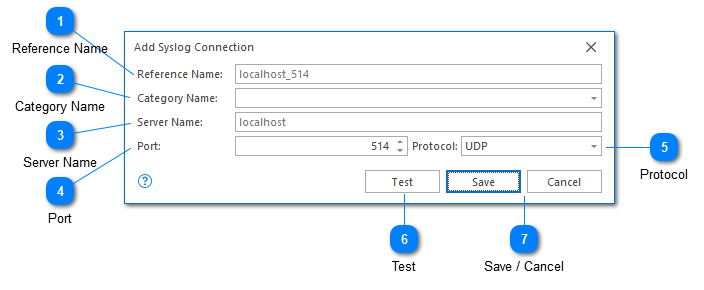Syslog

LogViewPlus can use a read Syslog events from a local or remote machine.
Syslog uses a defined message format. It is not necessary to configure a parser when processing Syslog messages.
Reference Name
A reference name can be set to more easily manage and access this configuration. Reference names should be unique. By default, the reference name will mirror the server name and port number. Reference names are also be used by the local log level and automatic template settings.
The name provided will be used to build a URI which can be used to refer to this server. For this reason, the name provided must be URI friendly - it should not contain characters or symbols which are difficult to represent in URI form.
Category Name
A category name is used to group Syslog connections into a folder in the Log Explorer. This field is not required.
If you have previously configured a server with a category name, this name will be available as a drop-down option. Alternatively you can type a new name into the category text box.
Server Name
The server that is publishing the Syslog data.
Port
The port where the Syslog data is published.
Protocol
The protocol that should be used when listening for Syslog data. The protocol can be UDP, TCP or both.
Test
Validates and tests the provided configuration.
Save / Cancel
Once you have configured your listener, you can use the save command to persist your changes. Once your changes have been saved the configured listener will be immediately available in the folder tree view.
Use the "Cancel" command to return to LogViewPlus without saving your changes.